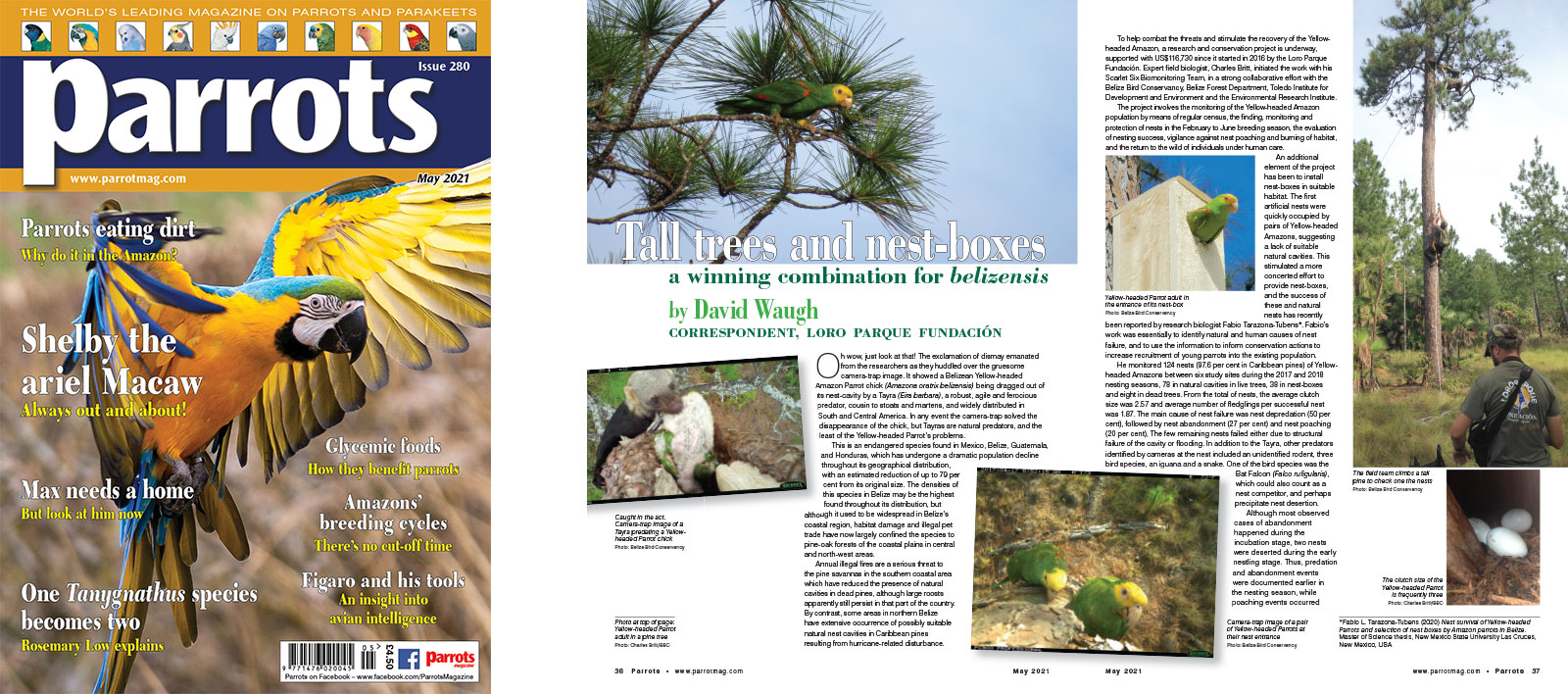
By David Waugh, Correspondent, Loro Parque Fundación
Oh wow, just look at that! The exclamation of dismay emanated from the researchers as they huddled over the gruesome camera-trap image. It showed a Belizean Yellow-headed Amazon Parrot chick (Amazona oratrix belizensis) being dragged out of its nest-cavity by a Tayra (Eira barbara), a robust, agile and ferocious predator, cousin to stoats and martens, and widely distributed in South and Central America. In any event the camera-trap solved the disappearance of the chick, but Tayras are natural predators, and the least of the Yellow-headed Parrot’s problems.
This is an endangered species found in Mexico, Belize, Guatemala, and Honduras, which has undergone a dramatic population decline throughout its geographical distribution, with an estimated reduction of up to 79 per cent from its original size. The densities of this species in Belize may be the highest found throughout its distribution, but although it used to be widespread in Belize’s coastal region, habitat damage and illegal pet trade have now largely confined the species to pine-oak forests of the coastal plains in central and north-west areas.
Annual illegal fires are a serious threat to the pine savannas in the southern coastal area which have reduced the presence of natural cavities in dead pines, although large roosts apparently still persist in that part of the country. By contrast, some areas in northern Belize have extensive occurrence of possibly suitable natural nest cavities in Caribbean pines resulting from hurricane-related disturbance.








Parrot Chat
Buyers Guides
Breeding articles